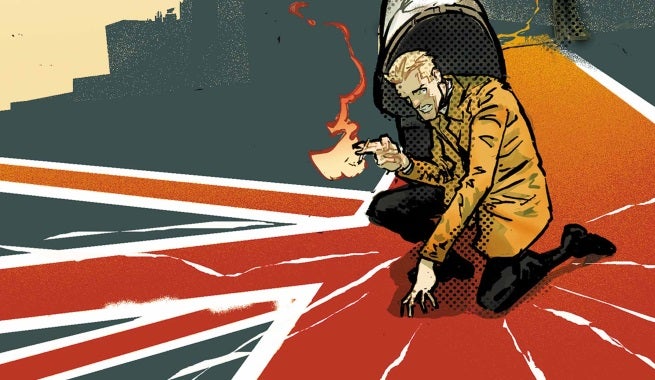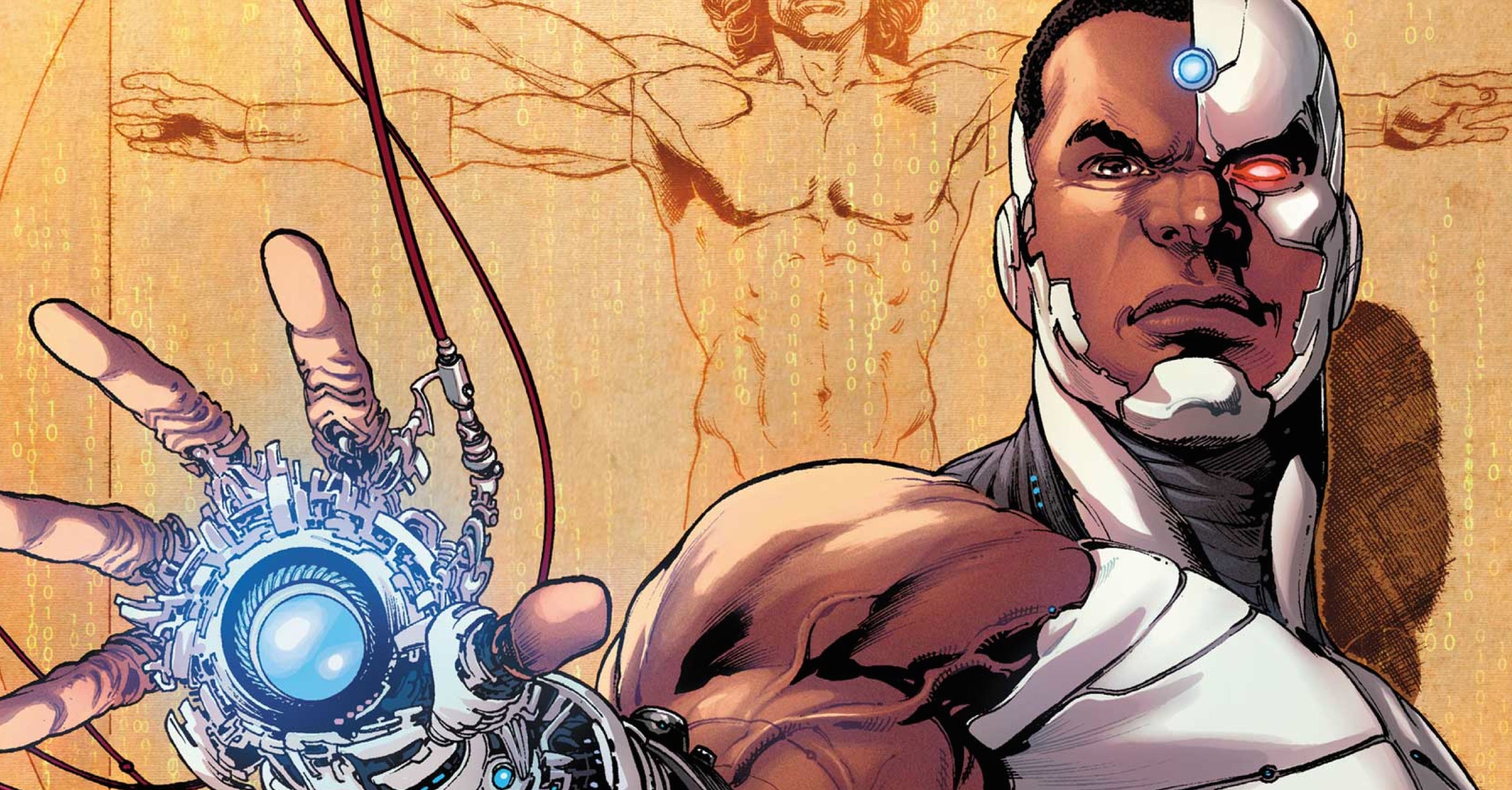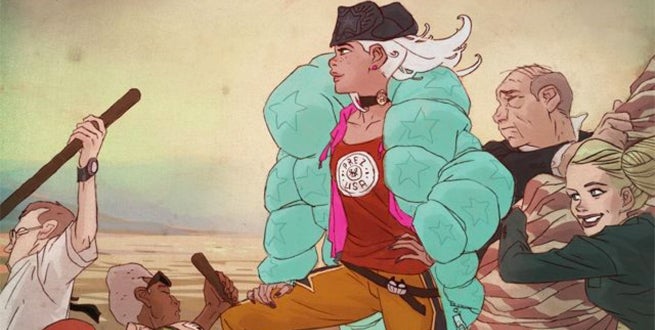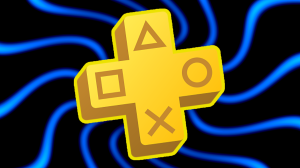
DC Entertainment’s recently-launched DC You publishing initiative has had a rough week.
Videos by ComicBook.com
Rumors that it was going to be reined in or cut back dominated on industry news sites, so much so that the publishers did an interview with a mainstream news outlet, the chief upshot of which seemed to be a vote of confidence in their current publishing plan.
It occurred to us that while The New 52 was something we covered non-stop — same with Marvel Now — more recent mini-relaunches like All-New Marvel Now and DC You have been primarily things viewed through the lens of the event stories they launch or which launch them (we’re looking at you, Convergence and Secret Wars).
With three months now in the can, though, there are some pretty obvious winners and losers coming out of the DC You campaign, and with a lot of negative buzz, we decided to give a little bit of attention to the positive.
A quick note: Feel free to leave titles you love in the comments. With dozens of books in the launch, not all books — or even all of the good ones — will be mentioned here. That said, this is me putting on my critic hat, so this list is subjective. I know our in-house critic likes literally none of the same books I do, so try the free DC You Sampler and see which appeal to you if you think I’m writing drunk.
(There are free, 8-page previews on ComiXology for all of the DC You titles, or on the DC website if you don’t have a ComiXology account. The Sampler is basically just a Previews catalogue with a touch more insight.)
Batman Beyond

In fact, I’m quite enjoying Bat-Mite, also from longtime everyone-but-Batman writer Dan Jurgens, as well, but when you have to trim down for the sake of a list like this, you end up losing things you love.
Tim Drake is one of the greatest DC characters created since the Crisis on Infinite Earths and almost certainly the most influential Batman family character introduced in my lifetime (I’m 35). Seeing him headlining his own title has been one of the things that I’ve missed the most since Flashpoint and seeing him take on the mantle of the Batman is particularly interesting.
For a few reasons.
Of course, from a character standpoint, Tim has never wanted to BE Bruce. He didn’t want to embrace that kind of darkness and in fact installed himself as Robin in no small part because of the way the existence of a “kid sidekick” lightened Batman’s burden.
And from a storytelling point-of-view? Well, it’s Batman Beyond, with a twist. I like Tim, and I can’t wait to see what role the world of Kamandi plays in all of this — something that was teased on the cover to #1 but hasn’t yet played a role in the series.
From an execution standpoint, Jurgens has found a voice for many of the characters, having had a chance to get a jump on “tortured, futuristic versions” of many of them (including Tim) in Futures End. Bernard Chang is doing some truly excellent work on art, with the strange, creepy and often unpredictable visuals demanded by the title complemented by excellent pacing and creative layouts.
Bizarro
This book is incredibly fun.
Heath Corson, who seems to be pumping out one of those animated Batman Unlimited films every 15 minutes or so, somehow finds time in between them to make a fun, funny take on the Superman universe populated with iconic versions of Jimmy and Bizarro that feel fresh without violating the canon that’s come before.
Many fans have pointed out that this Bizarro feels more Silver Agey than anything we’ve seen in years, although I’d say it shares a bit of DNA (no pun intended) with the one from John Byrne’s The Man of Steel, as well. And if you can’t quite pin down what element of the character Corson is bringing to the table after decades of history…well, that’s probably a pretty good sign he’s got the character right.
Meanwhile, artist Gustavo Duarte brings a fresh look and feel to the book that gels nicely with the over-the-top silliness of the scripts. The once-or-twice-an-issue cameos by superstar artists are fun, too, especially since they’re used narratively to kind of show the difference in the comic’s “worldview” from that of other characters.
Constantine: The Hellblazer
I’ve heard the least from others about this title out of anything on this list, but it’s actually one of my favorites.
It was, admittedly, front-loaded. The first issue gave us great set-up, some top-notch art and creative layout and storytelling decisions that the subsequent pair of issues haven’t quite matched — but so far, they’re still building on those concepts, so it isn’t like they abandoned that stuff.
And what they’ve headed into? It just feels like a John Constantine story, which is something that many of his more superhero-flavored New 52 adventures never totally did.
Riley Rossmo has long been one of the artists I’ve expected to eventually see take off, although even I couldn’t have guessed it would be on a book like Constantine; in order for that to happen, it more or less has to be this version of the book, with James Tynion IV and Ming Doyle giving it a voice that’s distinctively theirs and yet recognizably Constantine.
Cyborg
You’ll notice that the first two issues of Cyborg were both accompanied by interviews here at ComicBook.com.
That’s because writer David Walker is incredibly passionate about this book and he’s eager to talk about it.
That all comes through on the page, where Walker and superstar artists Ivan Reis and Joe Prado have crafted a take on Victor Stone that’s familiar enough that it doesn’t feel like a total reinvention — even as the character’s foundation itself is getting a bit of a makeover (again).
“Some of it is rooted into existing DC lore,” Walker told me. “We’re going to find out a little bit more about them as the story progresses. What I really wanted to do was that I wanted to tell a story that would test Cyborg, that would test Vic Stone, in a way that he hadn’t necessarily been tested before.”
Doctor Fate
With a Middle-Eastern protagonist, an indie-influenced art style and a wildly-divergent take on the character, it’s easy to forget that Doctor Fate is actually written by longtime DC chief Paul Levitz.
Along with artist Sonny Liew, Levitz is pitting a New York City-based medical student against the Egyptian god of the dead in a battle to for the world — which our hero doesn’t even fully comprehend as he’s fighting it.
Levitz has told interviewers that he’s channeling early Ditko in this book, and I can see that. He also seems inspited by years of “smart” supernatural comics that have rarely yielded big financial returns for DC and Marvel but which have been fan-favorites and helped chart courses for characters and worlds.
Ideally, this one could be the one that gets a little fan support, too, and sticks around for a while.
Justice League of America
Full disclosure: I’ve never been a huge fan of writer/artist Bryan Hitch. Really, that just makes my affection for this book more interesting.
Rumors that DC will rein in the DC You line in favor of more “meat and potatoes” comics ignore that a handful of the titles included in this push, this one especially, are more “meat and potatoes” than we’ve seen yet in the post-Flashpoint DCU.
Yeah, it’s still a superstar talent given relatively free reign…but his first arc is very reminiscent of the first arc of Morrison’s JLA, which saw members of Martian Manhunter’s race appear on Earth and, subtlely at first, launch an invasion. Here, it’s Superman.
If there’s a downside to this book coming when it does, it’s that frankly the recently-released Superman: The Men of Tomorrow hardcover by Geoff Johns and John Romita, Jr., tells a fairly similar story, albeit without quite so much conspiracy, intrigue, time-travel and presence by the rest of the League.
Hitch’s art, which has felt somewhat stale in recent years as he seemed to feel he got in a groove with The Ultimates and then made a lot of work that looked just like that, benefits from a different inking style that retains Hitch’s iconic “widescreen” feel but infuses his character work with some weight and makes it feel a bit less dated.
All of that said, probably the best part of this book is that it feels like the Justice League. Geoff Johns’ iconic take on the League dissipated quickly as the demands of being the spine of the New 52 changed the Justice League book into a showcase for a rotating cast and a hub for big “event” titles that weren’t being published as stand-alone miniseries anymore. Here, the stakes are high and the story is big, but it’s just the Justice League fighting a bad guy too big for any one of them. And there’s something both familiar and fresh about that.
Martian Manhunter
J’Onn J’Onzz kind of got the short end of the stick in the New 52. Long the heart and soul of the Justice League, Martian Manhunter was reinvented from being the only member who had been there from the beginning to…well, somebody who wasn’t there at all, replaced by former Titan Cyborg and shunted off to Stormwatch, an entertaining title that failed to capture the readers’ attention, so was reinvented and eventually cancelled.
For the first time in nearly two decades, J’Onn has a solo series now, and it’s a book that blends a lot of what’s best about the character, all with a dark and ink-heavy approach to the art that evokes the pulp-fiction-inspired environment that has been the domain of many of the best Martian Manhunter stories.
After all — and this is a concept the book has some fun with — what good is a main character who shapeshifts if there can’t be a little bit of paranoia and distrust in your world?
Midnighter
In a publishing initiative lauded for its embrace of diversity, it would have been easy to do Midnighter as “Gay Batman,” a label that’s easy to apply to him and has been for years.
Instead, they’ve embraced some of the craziest ideas of Midnighter’s mythology, downplaying the “Batman” stuff and playing up something that Batman doesn’t have — a mysterious past…and humanity. In the same way that Superman is incredibly human despite his alien nature, Batman is a regular guy who has more or less lost his soul in pursuit of justice. Here, Midnighter seems determined to pull himself out of that niche and reintroduce himself to the world around him.
An easy way of symbolizing that was to separate him from his longtime lover, Apollo, who was The Authority’s Superman analogue. Now, he’s dating on Tinder and running into ordinary, everyday people rather than hanging exclusively with the capes-and-tights set.
To be honest, more superheroes could afford to do that.
Prez
If there’s a book that typifies the house style of DC You more than Prez, you’d be hard-pressed to find it. A young, female protagonist in a comic tinged with social criticism, a writer imported form indie comics and an artist in the vein of recent big hits like Spider-Gwen and Batgirl.
It’s also a genuinely well-made book, entertaining and beautiful and funny and socially-conscious without being too didactic or offensive to those who don’t necessarily agree with everything.
A lot of that owes to the character work of writer Mark Russell, who provides us with a heroine who doesn’t think she knows everything. It’s debatable that the Hippie/Yippie-inspired version of Prez that introduced the character in the ’70s, wouldn’t work at all in today’s deeply divided culture and with the fairly conservative reader base at DC.
Still, there aren’t punches pulled here. It’s a book that’s sure of itself and its message; it’s really just the humor and the personality of its lead that makes it accessible and fun.
Starfire
I’m incredibly glad I gave this title a chance to grow on me.
After Starfire #1, my take was “this is a great book, but I’m not the target demographic.” After reading #2 and #3, I can say with confidence that the demographic for this title is “people who like good comics.”
A series with humor in which the superhero does acutal heroics, instead of just fighting monsters and villains? That’s the kind of things fans are always insisting they want, and then rarely supporting at the retail level. Starfire brings the character back from her sexpot appearances in Red Hood and the Outlaws and puts her in a title that almost anybody could read. The first couple of issues centered on the more-alien-than-most-aliens character getting acclimated to a new home, only to have it destroyed by a hurricane, which she had to work through to save people in her new neighborhood. All while we got comical, Impulse-from-the-90s style thought balloons filled with hilarious little drawings instead of words.

















